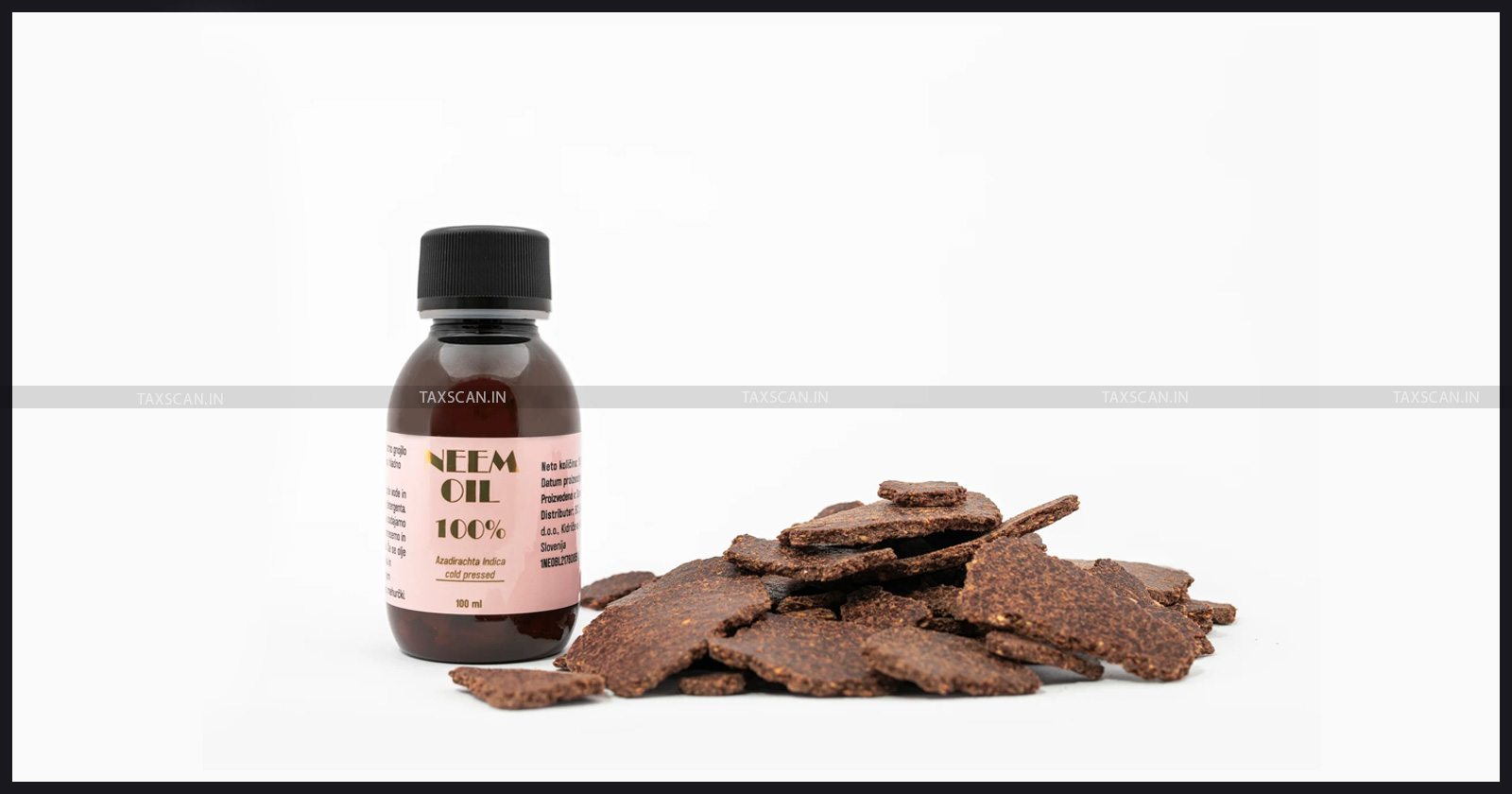No Refund of Unutilized ITC for Non-Edible Neem Oil and Neem Cake: AAR [Read Order]
There will be no refund of unutilized Input Tax Credit (ITC) for non-edible neem oil and neem cake due to the disparity in tax rates between inputs and outputs.

AAR – Authority for Advance Ruling – ITC – Input Tax Credit – Tax on Neem Oil – TAXSCAN
AAR – Authority for Advance Ruling – ITC – Input Tax Credit – Tax on Neem Oil – TAXSCAN
The Uttar Pradesh Authority for Advance Ruling ( AAR ) has ruled that there will be no refund of unutilized Input Tax Credit ( ITC ) for non-edible neem oil and neem cake due to the disparity in tax rates between inputs and outputs.
The applicant Pooja Solvent Private Limited is into manufacturing of neem cake and chemically modified non-edible neem oil (hereinafter referred to as non-edible neem oil) used as fertilizers in crop irrigation for essential nutrients (nitrogen, phosphorus, potassium, etc.) fixation ot upgrade the quality of soil, also used as pesticides for protection of crops from insects, worms, termites, etc. at facilities situated at Jainpur, Hardauli, Marka Road Shastri Nagar.
The oil produced from various processes at various facilities which includes, drying neem seeds, thereafter dried seeds are further crushed to obtain neemgiri, then the neemgiri is further cold pressed to obtain neem oil, which is high density, which cannot be used for soil irrigation. As per the specification of buyers the density of nem oil is modified by adding various chemicals such as mixed solvent, reducer oil, cashew nutshell liquid, etc. hence making it chemically modified and unfit for human consumption (non-edible). The chemically modified neem oil is transported through tankers for consumption.
The applicant has submitted that refunds on accumulated ITC on account of inverted duty structure are allowed as per the provisions of the CGST act 2017, but the same was specifically denied on HSN 1515 vide Notification no 09/2022- Central tax dated 13.07.2022. On further deep dive into the HSN classification of neem oil it was found that HSN 1515 is for neem oil not chemically modified. But the applicant’s neem oil is chemically to be used as fertilizers and pesticides. Therefore, as per applicant's viewpoint, correct HSN code for chemically modified neem oil should be under chapter 31 of HSN codes.
The applicable GST rates on inputs, input services and outputs, for the applicant comes under inverted duty structure as per first proviso to section 54(3)(ii) of CGST act 2017, as the chemicals (inputs) mentioned the application i.e. like nitrogen, phosphorous, potassium,etc. are taxed at 18% and 12% and the final output i.e. non-edible neem oil and neem cake are taxed at 5%, thus leading to large amount of input tax credit getting blocked and not refunded due to applicability of Notification no 09/2022 - Central Tax (Rate) on HSN 1515.
The authority bench found that neem seed oil is mentioned under Chapter Sub -heading 1515 90 20. Thus, the neem oil is classifiable under HSN code 15159020.However, as per applicant their product in question i.e. "Non-edible Neem Oil’ ‘are chemically modified and it should be classified as fertilizer under chapter 13 of HSN codes.
As per applicant, naturally produced neem oil by them is having Azadirachtin content of 100-900 ppm, whereas they are supplying to their buyers having Azadirachtin content of around 150 ppm. PPM of Azadirachtin is modified/reduced to 150 P M by adding mixed solvent, reducer oil, cashew nutshell liquid, etc. As per applicant this reduction in concentration is nothing but chemical modification and hence their product is chemically modified neem oil.
The two member bench of the AAR comprising Harilal Prajapati (Member of AAR) and Amit Kumar (Member of AAR) held that non-edible Nem Oil manufactured by the applicant having HSN code 1515 is covered by Notification No. 09/2022/Center Tax (rate) dt. 13.07.2022 and thus the applicant is not entitled to any refund of unutilized input tax credit, which is accumulated on account of rate of tax on inputs being higher than the rate of tax on the output supplies of such specified goods.
To Read the full text of the Order CLICK HERE
Support our journalism by subscribing to Taxscan premium. Follow us on Telegram for quick updates


